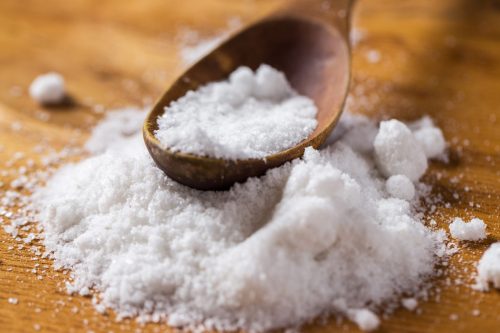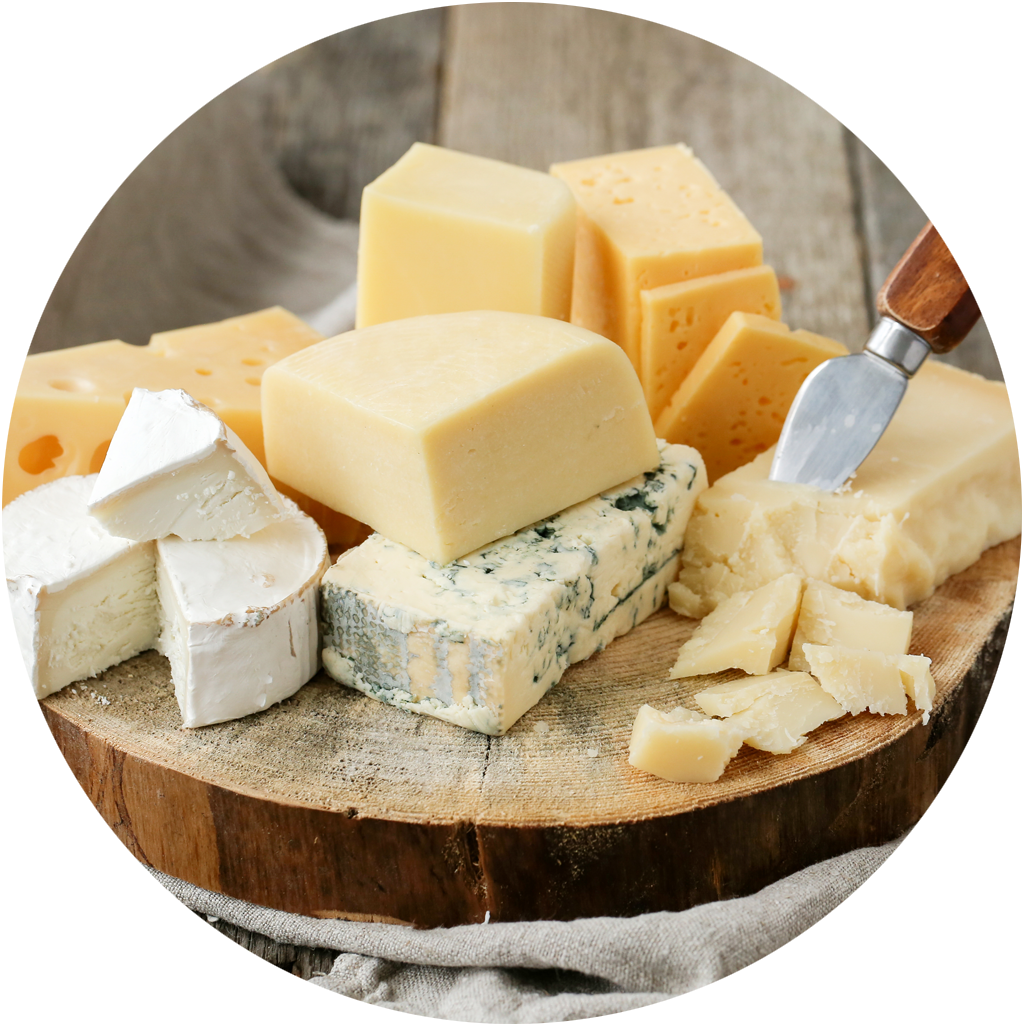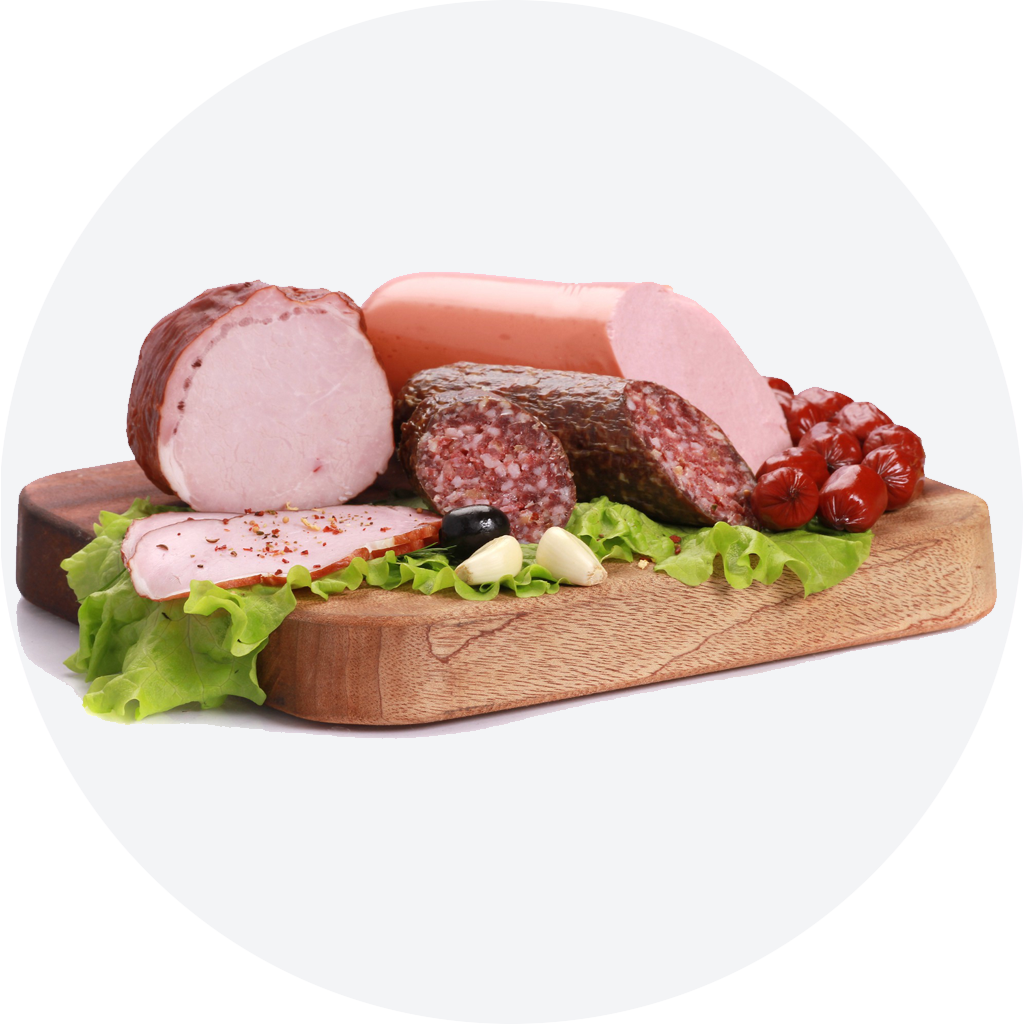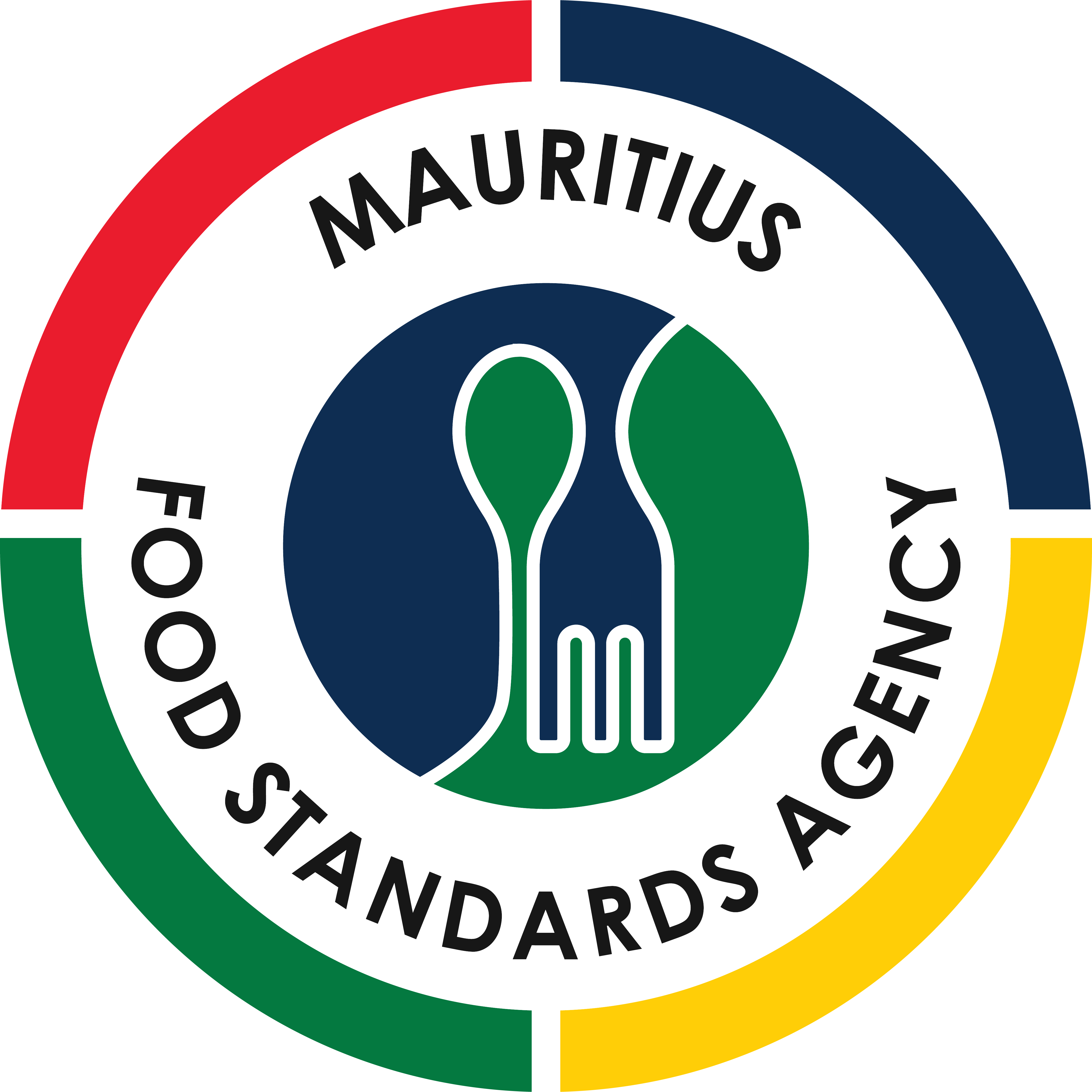
Sodium is a commonly occurring mineral. It is regulated by the kidneys and is essential to control the body’s fluid balance. It is also vital for the proper functioning of cells, muscles and the nervous system. Sodium is naturally present in a variety of foods, such as vegetables, milk, meat, shellfish and salt.
Sodium vs. Salt: what’s the difference?Salt is the everyday term we use for sodium chloride. Salt is made up of two compounds; sodium and chlorine, which make up its chemical name.
Recommended sodium intake
For adults, the World Health Organisation recommends less than 5 gm of salt (2000mg/day) per person per day, equivalent to a level teaspoon. According to the Mauritius Salt Intake Study 2023, Mauritians consume on an average 7.1 g of salt per person per day which is above the WHO recommendation.

1 teaspoon of salt
How to identify sodium on a food label?
Salt and sodium-containing additives are usually listed on the ingredients list on food labels. For packaged foods, the total sodium content (including naturally occurring sodium, sodium from additives and added salt) is indicated on the Nutrition Information Panel of the food label.
Consequences of excess of sodium in the diet
Consuming too much sodium in the diet can have several negative health consequences. Studies have shown that consuming too much salt is linked to an increased risk of fluid retention, high blood pressure, cardiovascular diseases, kidney damage amongst others.
High sodium food watchlist
Most salt we consume comes from processed foods and in the form of ‘hidden salt’. Watch out for the salt content in the following:
- Monosodium glutamate, sodium bicarbonate, baking soda, rock salt, red sea salt
- Salted meats and processed meat products such as ham, bacon, sausages, or salami
- Ready-made and powdered soups
- Ketchup, soy sauce, fish sauce, oyster sauce,mayonnaise, pickles, tomato puree
- Stock cubes, gravy powder and salted flavourings
- Canned food such as luncheon meat, canned tuna, canned peas
- Smoked/ salted meat, fish, prawns, octopus
- Meat and yeast extracts
- Cheeses and salted butter
- Salted snacks like crisps, nuts, biscuits, popcorn
- Ready-to-eat meals, sauces and takeaway meals
- Instant noodles
- Papadam
- Bread and breakfast cereals
- Carbonated and sparkling water
- Fast food

White, pink, green salt

Fast Foods

Crisps and pretzels

Cheeses

Instant noodles

Cured meat
Tips to cut down sodium from the diet
- Eat fresh, minimally processed foods
- Use little to no salt in cooking
- Leave the salt shaker off the table
- Read for labels to compare sodium content between brands and opt for choices with lower sodium content
- Choose fresh or frozen skinless poultry, fish, and lean cuts of meat rather than those that are marinated, canned, smoked, brined, or cured.
- Canned foods such as tuna and beans can be rinsed to remove some of the sodium.
- Cook rice, pasta, and hot cereals without salt.
- Cut back on instant or flavoured rice, pasta, and cereal mixes, which usually have added salt.
- Switch salty snacks (biscuits, crisps) for fresh fruits, veggie sticks or non-added salt alternatives.
- Be mindful of gourmet salts and salt substitutes dubbed as being healthier than table salt
- Experiment with herbs (coriander, thyme, mint, parsley, rosemary), spices (cumin seeds, turmeric), garlic, ginger, lemon, and other flavour enhancers to add taste to your dishes without relying on salt.
- Limit the usage of sauces such as mustard, mayonnaise, soy sauce, etc to one tablespoon. Even the low sodium sauces should be used sparingly.
- Restaurant and take-out meals tend to be higher in sodium. Ask for your meals to be prepared without added salt and monosodium glutamate or order sauces and dressings on the side so you can control the amount you use.
Control of salt in food
As per the Food Regulations 2024, bread may contain sodium in an amount which shall not exceed 400mg (1g of salt) per 100g of bread.
Source: British Dietetics Association & FSANZ
